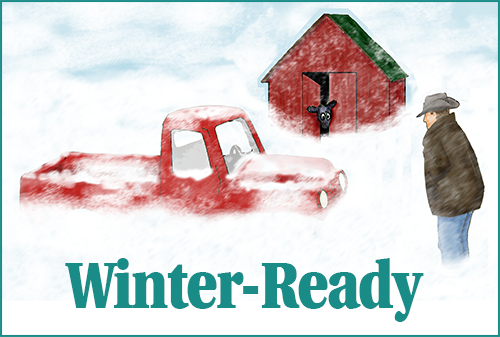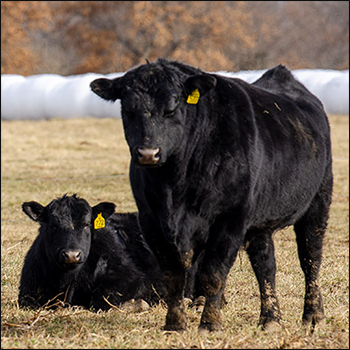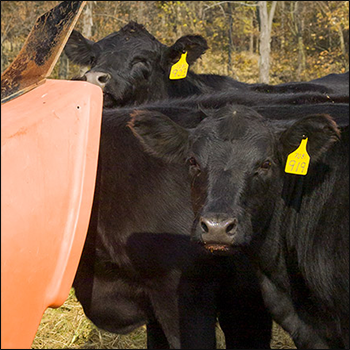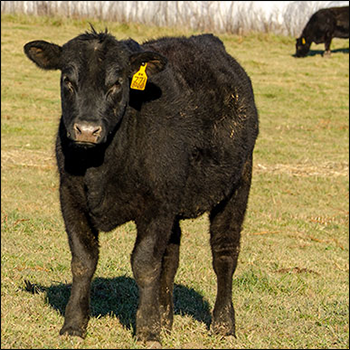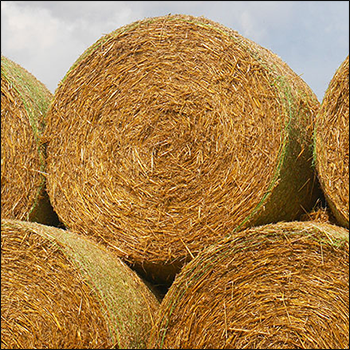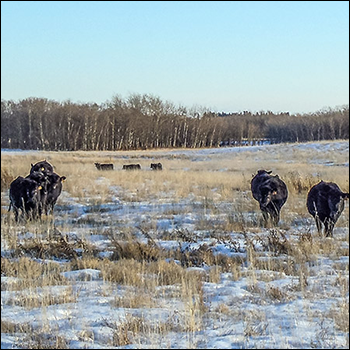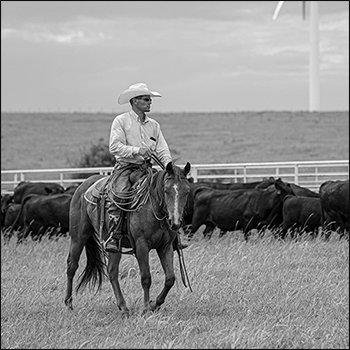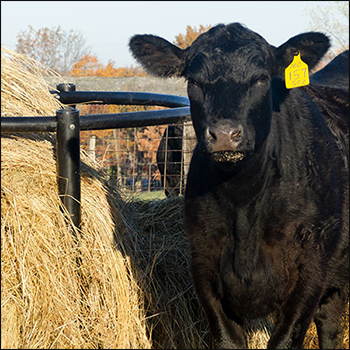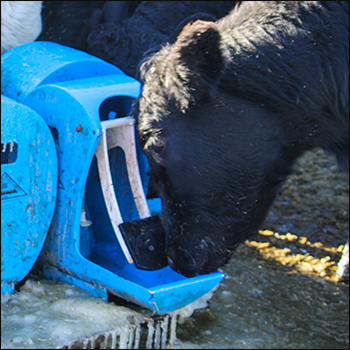In The Cattle Markets
The decision to retain at weaning during the fall calf run.
The CME futures market appears to be providing some incentives for producers to deliver cattle at later dates. As of Oct. 25, 2021, there was about a $2- to $3-per-hundredweight (cwt.) increase between contracts, with January 2022 trading at $158.90 and April 2022 trading at $163.38, all of which were higher than the October 2021 contract of $155.78 and the feeder-cattle cash index of $153.35 per cwt.
So how does a producer take those signals and make a retention decision? One way is to combine CME futures price offerings with historical price data across different weights to calculate what is known as the “value of gain.” Then add current and expected feed prices to calculate the “cost of gain.” Finally, compare the calculated value and cost of gain — which provides a simple “feed/no-feed” decision.
If the value of gain is greater than the cost of gain, then there are financial incentives to retain and feed cattle. However, if the value of gain is less than the cost of gain, then there are no market incentives to retain and feed cattle. That said, producers must consider unique factors that could either improve the value of gain or decrease the cost of gain. Such factors include additional premiums received from cattle at the time of sale and the ability to get cheaper feed resources from a relative or friend.
To illustrate this decision, I used a sample cow-calf operation in Nebraska considering whether to sell 66 head of 450-pound (lb.) weaned steer calves in the middle of November or to retain these weaned calves and sell them in the middle of April at 750 lb. Using this sample operation and current/forecasted feed prices, the calculated cost of gain was between $60 and $90 per cwt., depending on the price assumptions and feed used with a 2-lb. average daily gain. Using Beef Basis, assuming the type of cattle and marketing dates, the calculated value of gain for that operation selling into the Lexington, Neb., livestock auction is $121.13 per cwt. Using this sample operation there appear to be some financial incentives to retain cattle and put on additional weight.
Factors that could affect the retention decision
Weakening demand for beef and crop/forage conditions are two factors that could negatively affect the retention decision by either decreasing the value of gain or increasing the cost of gain.
Strong retail and export beef demand has supported prices for livestock, even given disruptions in the supply chain. However, beef exports have started to slow from their record-setting pace and, as of yet, there are few advanced purchases for beef into 2022. This is one indication that the export markets have started to potentially move away from higher-priced U.S. beef.
In the domestic market, advanced purchases of wholesale beef from retail stores have also started to slow as well, indicating domestic retailers may be more willing to live in the cash market and adjust featured products in the short run. This is perhaps one of the first signs that the price of beef is too high for retailers to take any longer.
High crop prices and decreased forage conditions are two factors that have been affecting cow-calf operations and feedlots during 2021. Harvest has started for corn and soybeans, and, in some places, is already completed.
Now everyone is looking to see what the actual yields are and how these factor into the feedlot’s cost of feed. This will have a large effect on what feedlots will be willing to pay for feeder cattle in the coming months and at what weight they desire to place feeder cattle. Lower yields, and thus higher corn and soybean prices, usually result in higher feed costs for feedlots. This reduces the price they are willing to pay for feeder cattle and creates higher premiums for heavier cattle relative to lighter cattle.
Forage conditions, previous and future, continue to be a persistent concern for cow-calf producers. Some feeding regions are coming off two years of drought conditions and many producers have already sold off both feeder cattle and parts of the cow herd. National weather forecasts recently were updated, and the probability of having another La Niña event this year is pegged at 90%. This suggests weather will be colder in the Midwest and drier in the South and Southwest — not too dissimilar to 2020. If this weather forecast materializes, then the price for grass and hay will continue to rise, pasture rental rates will adjust higher, and the cow herd liquidation that has persisted the last three years will likely continue.
Protecting output price under a retention decision
While the incentives to retain cattle and put on additional weight appear to be present this year in some locations, producers must calculate their operation's value and cost of gain to determine if it is a correct decision. Using some form of risk management could be appropriate given the assumptions about volatility and price certainty. In situations where we are uncertain about the price direction, we need to know about the price volatility. If volatility is high (low) synthetic puts (Livestock Risk Protection) is an appropriate tool to use. These risk-management decisions could help limit some of the effects of a negative price movement due to softening beef demand and potentially worsening crop/forage conditions under the situation where the producer decides to retain calves after weaning.
Editor’s note: Elliott Dennis is assistant professor and livestock extension economist in the Department of Agricultural Economics at the University of Nebraska–Lincoln.
